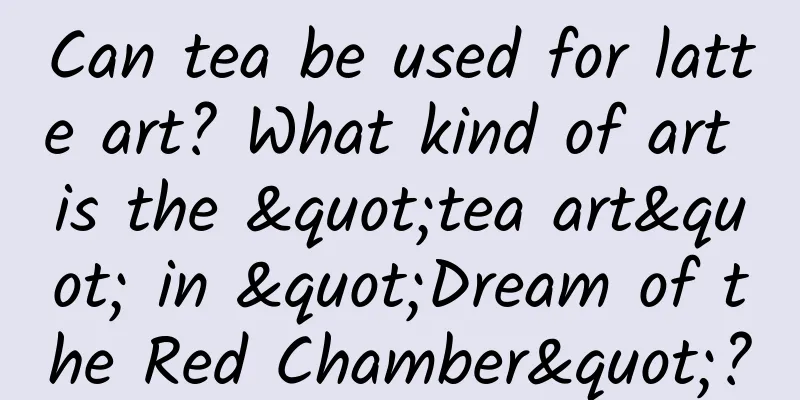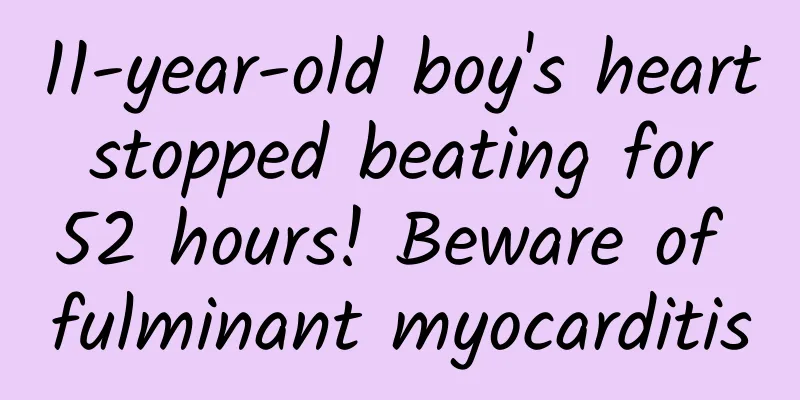Can tea be used for latte art? What kind of art is the "tea art" in "Dream of the Red Chamber"?

|
Audit expert: Liu Jun College of Food Science and Engineering, Central South University of Forestry and Technology Associate Professor, National Engineering Research Center for Deep Processing of Rice and By-products The TV series Dream of Red Mansions is currently on air. Liu Yifei's role as Zhao Pan'er amazed everyone as soon as she appeared. In addition, her tea art drawing skills, the "Tea Art" skill, attracted many people to watch. I have heard of coffee art drawing, but I have never seen art drawing on tea soup. Netizens left comments saying, "I'm afraid this is not the earliest art drawing in the world." Source of Tea Opera | Screenshot of "Meng Hualu" How to make coffee latte art Let's start with the coffee latte art that we are most familiar with. If you want to make latte art with coffee, you can't do without the blessing of milk. According to the formation method, coffee latte art mainly includes two types: latte art and carving. "Latte art" refers to pouring hot milk into espresso while using professional techniques to "pull" out the pattern, while "carving" is the process of creating directly on the milk foam with auxiliary items such as chocolate sauce or toothpicks after brewing the original coffee. Coffee source: pixabay In the process of latte art, milk foam is indispensable. So how is milk foam formed? Milk foam can be simply understood as a combination of "milk + air". Milk contains two kinds of proteins - casein and whey protein. In coffee shops, we often see baristas using steam and high temperature to make milk foam. Under high temperature and high speed stirring, millions of tiny bubbles are beaten into the milk, and whey protein will wrap more air to form individual bubbles. At the same time, these bubbles are also covered with casein containing surfactants, which increase the surface tension between gas and liquid, making the bubbles more stable and lasting. Milk foam source: pixabay The reason why milk foam can be used to make latte art is because coffee contains fat. The fat on the surface of coffee can form a large enough surface tension to support the milk foam rich in bubbles. During the latte art process, the continuous shaking technique changes the flow direction and flow rate of the milk foam, thus forming a variety of latte art patterns on the surface of the coffee. Tea art - Tea Hundred Arts Different from coffee latte art which requires milk, tea art does not require any other ingredients and can be created with just the tea itself and a bowl of water. Tea Opera, also known as Tea Division, Water Painting, Soup Opera, Tea Opera, etc., was a very popular tea art technique in the Song Dynasty. With tea as paper and water as ink, meaningful words and patterns can be drawn on the tea soup with just a few strokes. Tea Opera originated in the Tang Dynasty and reached its peak in the Song Dynasty. It was a tea culture activity highly praised by literati and poets at that time. Tea Opera Source: pixabay This ancient tea art is very similar to today's coffee art, which also involves drawing patterns on the surface of the drink, but the techniques are different. The tea soup that can be used for tea is not simply brewed tea, but a work that has been made after tea making. First, the tea master needs to make fresh tea leaves into tea cakes and store them in tea roasting cages. When needed, take out a piece of tea cake, grind it into powder with a tea grinder, and then sieve it several times to refine it. Tea grinder source: a shopping website Then, a small amount of boiling water is poured into the processed tea powder to make it into a thick paste. As the boiling water is added little by little, the water and the tea powder blend together under the beating of the tea pipe, and layers of tea foam appear on the surface. Source of tea ordering丨Bibili video screenshot uploader: Chasongjun In order to obtain tea foam that can be used for painting, it is necessary to constantly stir with a tea whisk to allow water, tea powder and air to fully contact and blend. In addition, due to the tea saponins contained in the tea leaves themselves, the tea foam will become thicker and denser during the stirring process, until the tea foam sticks to the wall of the cup and does not disperse for a long time. This is considered a success, and this is called "biting the cup." Tea whisk source: pixabay After making tea, the next step is to separate the tea. Separating the tea means using a small spoon to dip into water and use the tension of the water to split the tea leaves floating on the surface, thus creating the so-called "tea veins". In the production of tea and coffee art, foam is a dispersed system of gas dispersed in liquid. Only when the gas and liquid are in continuous and sufficient contact can foam be produced. To obtain stable foam, surfactants are indispensable. Surfactants generally have a hydrophilic end and a hydrophobic end, which enables them to be distributed on the gas-liquid interface, reduce the surface tension of the system, and make the foam stably exist in the liquid. In tea making, the surfactant that plays a role is tea saponin, which is a class of complex glycoside compounds. Like casein in milk, it is also a type of surfactant with strong foaming ability. Source of Tea Opera | Screenshot of Bilibili video showing a live demonstration by Zhang Zhifeng, the inheritor of Tea Opera Although coffee latte art and tea art may seem similar, they also have many differences. For example, coffee latte art requires milk, and the light-colored latte art is milk foam, which uses the surface tension of fat. The dark color in the tea art pattern is tea foam, and the light color is the original color of the tea soup after the tea foam is cut off, which uses the tension of water. As a precious cultural heritage and a scarce tea culture resource in China, the inheritance of tea opera has been very bumpy. Since the Yuan Dynasty, the art of tea-dividing has gradually declined. Although there are occasional records, it has never reached the level of prosperity in the Song Dynasty. Zhang Zhifeng, a native of Fujian, has made great contributions to the inheritance of this technique. After more than 20 years of research, he revived this ancient tea art and was hailed as the representative inheritor of the tea art. The "tea art" was also listed as an intangible cultural heritage of Wuyishan City in 2010. The "tea art", a Chinese cultural treasure from thousands of years ago, was reflected in the play "Dream of Splendor", which also benefited from the fact that the crew invited Mr. Zhang Zhifeng to provide guidance. |
>>: How to wash underwear clean? It turns out that these washing methods are wrong!
Recommend
Drones also "hitch a ride" - new drones carry missiles
It is already a "routine operation" for...
The electric vehicle sales ranking for the first half of 2020 is released, with Tesla taking the top spot, accounting for nearly 20%
Although electric vehicles have been criticized f...
Why the stock price plummeted: Lenovo has fallen into the pain period of profit transformation
Recently, Lenovo released its interim financial r...
Private domain traffic SOP guide!
The topic I want to talk about today: private dom...
France does not rule out reducing or selling Renault stake depending on market conditions
According to foreign media reports, French Financ...
Which cooking oil reduces the risk of cancer? Harvard's latest research reveals
As an important part of our daily diet, the healt...
How to find the best selling point in 15 minutes? This is what the boss thinks...
Have you ever had this experience , your boss cal...
What's in a bird's nest? Much more than twigs and straw...
What are bird nests usually made of? Twigs and st...
Internet Promotion: How to Master Internet Traffic in 3 Steps?
Traffic is a very critical issue for Internet com...
Six major international legions compete for Mars. Who is being held back by the COVID-19 pandemic?
Interview experts: Ouyang Ziyuan (Academician of ...
Ten Lectures on Event Planning and Promotion
Event planning is an important part of marketing ...
9 thoughts behind private domain traffic, fission, and sinking market
The topic of private domain traffic has become in...
A comprehensive analysis of "Tik Tok" short videos, the trend of the new era?
In this fast-paced, information-based society, yo...
6 common mistakes made by smart people when it comes to data analysis!
6 common mistakes smart people make when it comes...
The iOS 8 upgrade incident is not over yet, Apple has become the defendant
[[125523]] The complaints about the iOS 8 upgrade...









